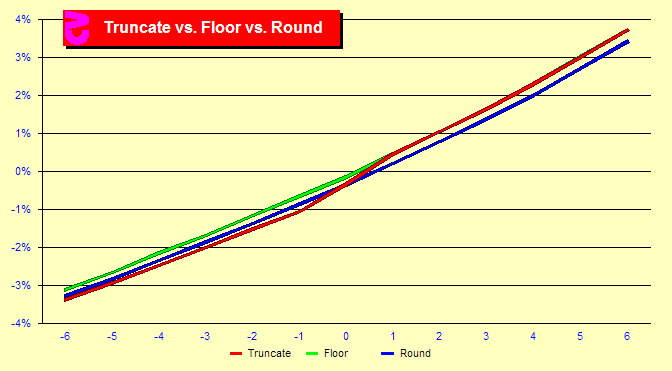
Originally Posted by
Dog Hand

San Jose Bella,
For a TC of, say, -5, consider what range of fractional TC's (FTC's) this encompasses for each of the three calculation methods:
1. Flooring: -5 <= FTC < -4
2. Rounding: -5.5 < FTC <= -4.5
3. Truncation: -6 < FTC <= -5
Thus, the AVERAGE FTC is (roughly) -4.5, -5.0, and -5.5, respectively. Therefore, the edge at a TC of -5 is naturally highest for flooring and lowest for truncation, as shown in Norm's figure.
However, you are failing to account for an important missing variable: what is the FREQUENCY DISTRIBUTION of the TC's? The overall EV, or Initial Bet Advantage (IBA), for the player is found by summing (over all TC's) the product:
IBA = sum[(TC EV)*(TC Frequency)*(TC Wager)]
Thus, if the TC EV is higher for flooring than for the other methods, but its corresponding frequency is lower, you cannot know in advance which method will produce the highest IBA.
Hope this helps!
Dog Hand





 Reply With Quote
Reply With Quote

Bookmarks